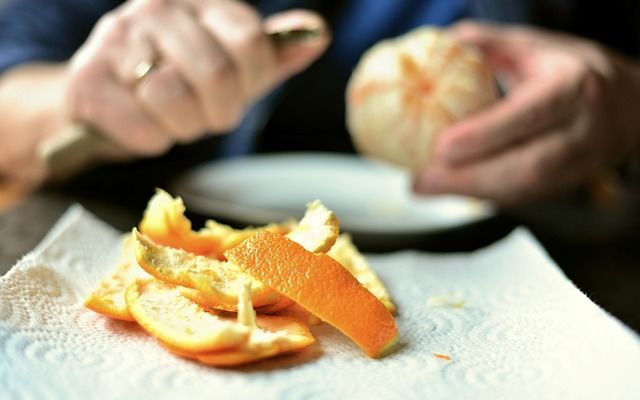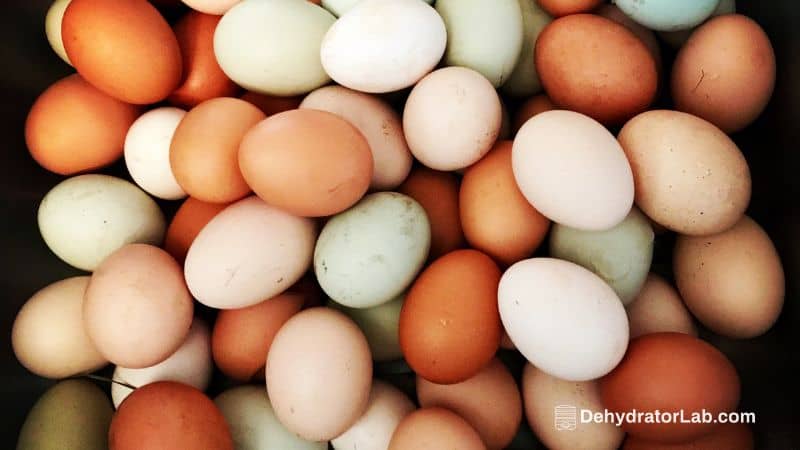Extreme moisture content in vegetables, fruits, and meats is only useful when they are fresh. Storing these foodstuffs in their high-moisture state provide a breeding environment for bacteria, which speed up the rotting process.
Food dehydrators are energy-powered devices that use fans and low temperatures to extract the moisture content in foods. The heat used to dry the foods is released at regulated levels, so it doesn’t affect the food enzymes and nutrients.
The more advanced versions of food dehydrators have multiple functions. They do more than drying your groceries and meat to extend their shelf life.

Wondering what else a food dehydrator can do? Here are beyond-ordinary applications of these vital kitchen devices.
In this article:
Top 10 Uses for a Food Dehydrator
1. Making Pet Treats
Treating your dog or cat once in a while strengthens the friendship bond. Pet treats are healthy and delicious, so they’re fun to eat and good for boosting the pet’s health. Making pet treats shouldn’t be a costly or challenging endeavor if you have a fully-functional dehydrator at home.
Dehydrated treats are safer, more economical, and easier to store. They taste and smell better, as they contain all nutritious contents of the original foodstuff.
When making meat dehydrated pet treats, you have to cut the meats into delicacy size strips and place them on the dehydrator tray, while leaving spaces in between the meat slices. Set your dehydrator to 70 degrees Fahrenheit and the timer at 7 hours, and give it time to cook.
As for vegetable treats, you have to wash and dry the vegetables, cut them to small sizes, and put them on the dehydrator tray after setting the dehydrator to about 70 degrees and timer at 5 hours.
2. Drying Herbs And Flowers
If you’re in search of a simple way to make herbal teas and personalized potpourri out of herbs and flowers, you don’t need expensive equipment or supplies. All you need is a functional food dehydrator with the right functions and features.
Dehydrating is one superb way to give herbs a stronger flavor and aroma. They make your teas taste more delicious and your potpourri to have a blazing smell. Some great herbs you can dehydrate to help eradicate the odor smell in your rooms include oregano, lemon balm, rosemary, mint, and sage.
Herbs and flowers have extreme moisture content, which makes them mold if not properly dried. Get your herbs and rinse them thoroughly in cold water, shake, and rub them dry. Make sure you discard all the bruised leaves before you place them on the dehydrator for further drying.
Set the machine to around 95 degrees Fahrenheit and allow your leaves to dry. Once they’ve dried, remove the leaves in their full size from the dehydrator and store them in an airtight container.
3. Making Homemade Yogurt
Adding a dehydrator to your kitchen comes with the versatility of being able to prepare homemade yogurt whenever you feel like. If you’re the kind of people who prefers homemade yogurt because it lets you decide what ingredients to use, it’s time you got yourself a food dehydrator.
For more quality results, get a dehydrator with a thermostat that’s capable of heating foods to about 200 degrees Fahrenheit. That aids make boiling the raw milk to the highest possible temperature easier if you happen not to have an oven for doing the heating.
Get any amount of fresh milk and heat it in an oven until it boils. Allow it to cool down to about 115 degrees Fahrenheit. Add your preferred amount of yogurt to the milk, and put the mixture in a plastic or glass container. Put the container containing the milk mixture on the dehydrator and let it heat to the desired thickness. It may take 4 to 8 hours, depending on the thickness you want to achieve.
4. Preparing Meat Jerky
Dehydrators are the safest household equipment for making meat jerky. These user-friendly and reliable kitchen devices streamline the otherwise intricate process of making lip-smacking and appetizing jerky meat.
Jerky meat is nutritious, free of chemicals, and safe for human intake. To get the most delicious meat jerky, make sure you don’t overheat your meat. Remove the fat content in the meat by heating it in an oven if you want to get easy to treat meat jerky that tastes great. Use a proper jerky gun to make your life easier.
Experts recommend tossing the meat into a freezer for several hours to stiffen it up and make slicing it into small pieces easier. Prepare the meat jerky at 155 degrees Fahrenheit and for roughly four hours. Before serving, let your yummy jerky meat cool down for several minutes.
- You might like: How To Rehydrate Your Jerky
5. Making Fruit Leather
Also known as fruit rolls, fruit leather is a popular food snack. Making your fruit leather at home is easy and fun. All you need is a dehydrator and enough fruit. Creating fruit rolls is as easy as getting fruit puree, cooking it in an oven, drying it out in a dehydrator, and cutting it into small pieces for easy storage. Use a non-stick sheet to ease the process of removing the fruit leather. You may as well want to use unbleached parchment paper if you got one.
Use high-quality fruit puree if you want a healthy food snack full of nutrients. As well, use additives in the right quantity as the excess amount may affect the fruit leather malleability and hardening.
When drying the fruit puree, keep the dehydrator temperature at 135 degrees Fahrenheit. It can be lower but not higher, as extremely high temperatures may lead to over-drying. Your fruit rolls will be ready once the moisture content is removed, so monitor the dehydrator prudently.
You might like: Can you dehydrate plums?
6. Use It As A Humidifier
One less known use of a dehydrator is in moistening dry rooms. Dry air in rooms can seriously affect the health of the people inside. It can trigger extreme skin dryness or even cause an irritating cough.
Purchasing a humidifier is an excellent way out if you have the finances. But what if you don’t have any money with you? Will you let the dry air deal mercilessly with your health? Of course, you wouldn’t.
A dehydrator can help transform your rooms into serene habitable environs by supplying enough moisture to replace the dry air. It works by sucking all the moisture content in food products and diffuses it into the air. For quicker and lasting results, you need to place a bowl of water into your dehydrator and allow it to suck and disperse fresh air around your rooms.
The amount of water required to replace the dry air depends on the size of the rooms. Check out expert guides and tricks on how to turn your dehydrator into a humidifier to get more refined results.
7. Making Orange-Scented Fire Starters
Lighting fire with a highly flammable and good-smelling homemade fire starter can make you forget the ready-made fire starters. The orange-scented fire starters, which can be made in hours by use of a dehydrator and orange peel, can turn your camping or mountaineering experience into something more extraordinary than you ever imagined. To create your fire starter with orange peels, all you need to do is to dry out the peels in a dehydrator.

When dried, the orange peels become flammable, while the oils in the peels condense, creating a pleasant citrus aroma. Dried orange peels light quickly and burn nicely due to the oils present in the peels. They release the most delightful scent ever.
They’re the best solutions for anyone who wants to turn their fireplace into something more enchanting by removing the boredom associated with using fire starters that have unappealing odors. In creating the lighters, you’ve to wash the peels first with veggie wash and dehydrate them at 115 degrees Fahrenheit for about 5 hours.
8. Easy Way To Dry Winter Gloves And Hats
While adults see winter snow as a nuisance, kids see it as a classic winter activity, where they can enjoy the snowball fight. The problem is when they retreat in the snowball fight; most of them end up with wet gloves and hats.
These clothes take longer to dry and aren’t safe to wear. Considering the cold winter climate, it may take days, if not weeks to dry these soggy artifacts. That will not be the case if you have a dehydrator. You can get the gloves and hats dried in hours if you use the right dehydrator.
All you need is to place the soggy clothes inside the dehydrator tray and set the temperature to around 115 degrees Fahrenheit. The dehydrator will wick all the moisture in the gloves and hats, leaving them dry in a matter of a few hours.
Using a dehydrator, in this case, is cheaper and quicker when compared to the use of a dryer. It’s a fun way to dry your clothes and ensure you stay toasty and warm all through the winter season.
9. Rejuvenating Stale Crackers And Crisps
Have you ever woke up happy and convinced that you have some snacks to enjoy before breakfast is ready only to realize your chips have gone stale because you didn’t close the chips bag? It’s quite not a decent morning experience. The problem comes when you have to choose whether to eat the chips in their stale state or throw them away. A dehydrator can serve as savior in such a situation.
Dehydrators can’t revive rotten or moldy crisps and crackers, so if they’re rotten, just throw them away. But if your crisps are just stale, you have to put them in the dehydrator tray while still in their bag and set the dehydrator to 115 degrees Fahrenheit.
It will suck all the moisture content, making the crisps soggy and stale to bring them back to their original state. While the taste and smell may not be the same as the one in original crisps, they will be good enough to make your stale food eatable.
10. Revive Old Cassette Tapes
This the most unexpected use of a dehydrator. You may be wondering how a dehydrator can revive old cassette tapes. Cassette tapes fail to play mostly when the oxide coating gets separated from the tape. The simple way to ensure the tape plays is to stick the coating to the tape together.
A fun way to stick the tape and coating together is by using a food dehydrator. All you have to do is to get the faulty tapes and place them on the dehydrator drying racks. Set the dehydrator temperature to 140 degrees Fahrenheit and allow it to do its magic for around eight good hours.
The heat released by the dehydrator will connect the tape to the coating. After the eight hours are over, remove your tape and let it cool down for some time before you play it.
Conclusion
By now, you’ve got a clearer picture of what a dehydrator can do besides drying out foods to increase their shelf life. The dehydrator uses we have outlined above are not only unusual but also fun. There are other outstanding things you can do with your dehydrator, including making craft supplies, camping meals, and papers.
As long as you’re creative and inventive, you can turn your dehydrator into the most useful and reliable equipment in your kitchen. And for those who are yet to invest in a dehydrator, make sure to get a featureful and robust unit that serves a variety of functions.



